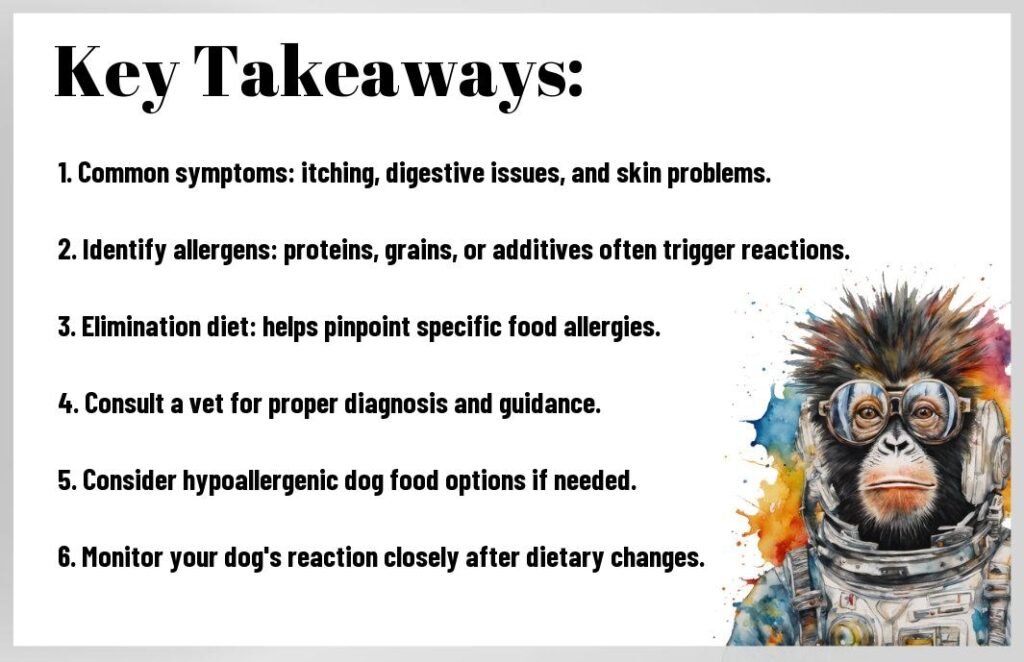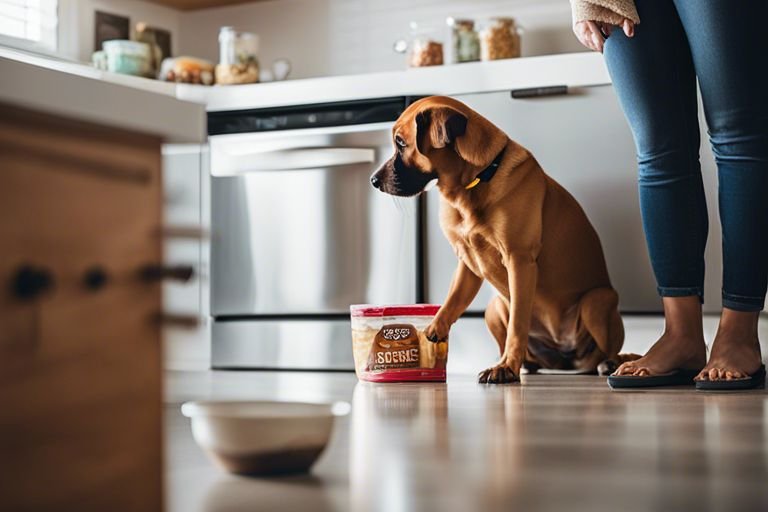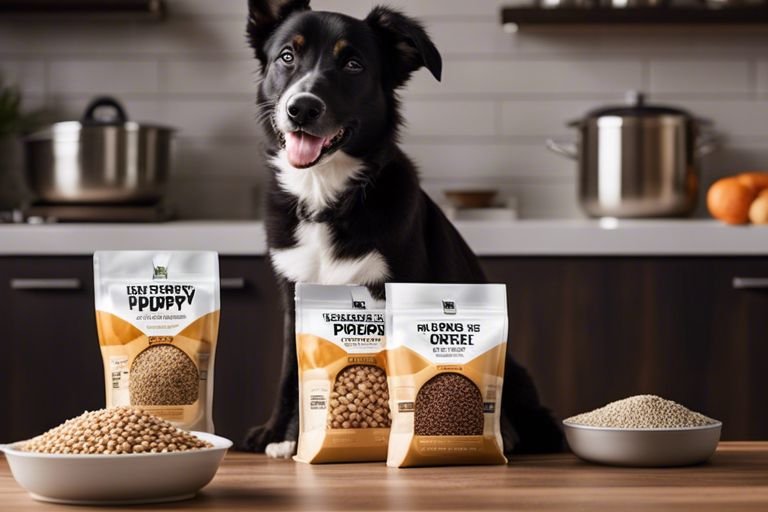Understanding Dog Food Allergies – Symptoms, Causes, And Solutions

Solutions to dog food allergies can often feel elusive, leaving you frustrated as you try to pinpoint the issue affecting your furry friend. Understanding the symptoms your dog exhibits, the potential causes behind these allergies, and effective solutions can empower you in your journey to keep them healthy and happy. In this post, we will address common signs to watch for, explore the underlying reasons for dog food allergies, and offer actionable solutions to help both you and your pet find relief.
Key Takeaways:
- Symptoms: Common indicators of dog food allergies include itching, skin infections, gastrointestinal issues, and excessive licking.
- Causes: Dog Food allergies is often stem from specific proteins such as chicken or dairy, and can also be triggered by additives and preservatives.
- Diagnosis: A vet’s assessment, often involving elimination diets, is crucial to accurately identify food allergies in dogs.
- Solutions: Implementing a hypoallergenic diet, which eliminates trigger ingredients, is necessary for managing food allergies in dogs.
- Prevention: Gradually introducing new foods and maintaining a consistent diet can help reduce the risk of developing dog food allergies.

Understanding Dog Food Allergies
Definition of Dog Food Allergies
With increasing awareness of pet health, it is vital to understand what dog food allergies are. A food allergy in dogs occurs when their immune system mistakenly identifies a specific ingredient in their diet as harmful. This triggers an immune response, leading to various symptoms that can affect your dog’s skin, digestive system, and overall well-being. Unlike food intolerance, which typically involves a non-immune-mediated reaction, food allergies can result in serious health issues if left unaddressed.
Differences Between Food Allergies and Food Intolerance
Allergies and food intolerances may seem similar, but they are fundamentally different. Allergies involve the immune system, resulting in an immediate and potentially severe reaction. Pets suffering from Dog food allergies may experience symptoms such as itching, swelling, and gastrointestinal distress shortly after consuming the offending food. In contrast, food intolerances do not involve the immune system and typically lead to a slower onset of symptoms, including upset stomach, diarrhea, or gas, which can be more chronic and less severe.
The distinction between the two is crucial when diagnosing and treating your dog’s issues. An accurate diagnosis allows you to implement the right dietary changes and avoid the foods that could harm your pet’s health. Knowing whether your dog has a food allergy or intolerance will guide you toward effective solutions and treatments, ensuring your furry friend’s quality of life remains high.
Common Misconceptions About Dog Food Allergies
Common misconceptions surround dog food allergies, often leading to confusion among pet owners. One prevalent myth is that dogs outgrow food allergies, while in reality, these allergies can persist throughout a dog’s life. Another common belief is that dog food allergies cause immediate, dramatic reactions; however, symptoms can often be subtle and may develop over time, making it challenging for you to pinpoint the allergen. Understanding these misconceptions can help you better navigate your dog’s dietary needs and health issues.
Symptoms of Dog Food Allergies
There’s no denying that understanding the symptoms of dog food allergies is crucial for every pet owner. By identifying the signs early, you can help your furry friend avoid discomfort and maintain a healthy lifestyle. Common symptoms may manifest in various forms, affecting your dog’s skin, gastrointestinal system, behavior, and even their respiratory health. Recognizing these indicators can empower you to take action and consult with a veterinarian for appropriate treatment.
Skin Reactions
One of the most noticeable symptoms of dog food allergies includes skin reactions. You may observe your dog scratching excessively, resulting in redness, irritation, or inflammation. This can lead to hot spots as your dog tries to alleviate the itch, which can become infected if not treated properly.
Additionally, you might notice hair loss or flaky skin, which can indicate that your dog’s skin barrier is compromised due to an allergic reaction. It’s crucial to monitor these signs closely, as persistent skin issues could lead to further complications if left untreated.

Common Allergens in Dog Food
Unlike many pet owners realize, dog food allergies can be significantly impacted by specific ingredients, making it vital for you to identify common allergens in your pet’s diet. Knowing these allergens can help you choose the right food or make necessary adjustments to alleviate your dog’s symptoms and promote their overall health.
Protein Sources
On the list of common allergens are various protein sources, including beef, chicken, lamb, and fish. Your dog might develop an allergy to one or multiple proteins, which can manifest as skin irritation, digestive problems, or more severe health issues. If your dog exhibits signs of an allergy, consider examining their protein sources carefully and experimenting with novel proteins that your pet has not been exposed to before.
Additionally, protein allergies can often be challenging to diagnose since symptoms can mimic other issues. You may find it helpful to consult with your veterinarian to determine the best course of action and to consider an elimination diet to pinpoint the problematic ingredient.
Grains and Gluten
Gluten is another allergenic component that arises from certain grains, primarily wheat, barley, and rye. Dogs can experience adverse reactions to these grains, leading to gastrointestinal upset, skin issues, or other health concerns. Although gluten intolerance is less common in dogs than in humans, it is still vital to stay vigilant when selecting your dog’s food.
Grains can also impact your dog differently based on their specific health and dietary needs. Some dogs may thrive on grain-inclusive diets, while others do better on grain-free options. Be observant of any changes in your dog’s behavior or health after dietary changes to identify potential allergies to grains or gluten.
Another consideration is that not all grains are created equal. For instance, while brown rice may be well-tolerated by some dogs, corn and wheat are more commonly associated with allergic reactions. Understanding which specific grains affect your dog can significantly ease their discomfort.
Diagnosing Food Allergies in Dogs
Once again, it’s crucial to approach the possibility of dog food allergies in your pet with thoroughness and a methodical process. Understanding the various diagnostic procedures helps you make informed decisions about treating your furry friend. This section will cover key methods for diagnosing dog food allergies, allowing you to identify the root cause of your pet’s discomfort.
Veterinary Assessment
The first step is to seek a veterinary assessment for your dog. Your veterinarian will conduct a complete physical examination and discuss your dog’s medical history, focusing on any signs of allergic reactions. They may ask you questions about your dog’s diet, symptoms, and any environmental factors that could influence their health.
Through this detailed assessment, your veterinarian can rule out other potential causes of your dog’s symptoms, such as parasites or infections, which may mimic food allergies. This thorough understanding sets the stage for subsequent tests that can pinpoint specific food sensitivities.
Allergy Testing Methods
On the market, there are various allergy testing methods available, including blood tests and skin tests. The results of these tests can help identify specific food allergens or environmental factors contributing to your dog’s allergic reactions. While these methods can be helpful, they may not always provide conclusive results, making a comprehensive approach important.
Another option is to consult with a veterinary dermatologist, who specializes in skin-related allergies. This expert can offer targeted tests and insights that go beyond basic allergy tests, ensuring that you are well-informed about your dog’s specific conditions and sensitivities.
Monitoring Symptoms
Testing continues beyond initial assessments and elimination diets through consistent monitoring of your dog’s symptoms. It’s important to observe any changes, improvements, or reactions that occur when you adjust their diet. Keeping a watchful eye will enable you to identify any additional food sensitivities or allergies that may arise over time.
Diary entries should include details about your dog’s behavior and health, such as changes in coat condition, gastrointestinal disturbances, and any signs of itching or discomfort. This recording provides invaluable insights for you and your veterinarian in evaluating the effectiveness of the treatment plan.

Treatment and Management of Food Allergies
Not addressing food allergies in your dog can lead to persistent discomfort and complicate overall health. Therefore, understanding how to treat and manage these allergies is crucial for your pet’s wellbeing. The management approach often begins with the identification and removal of allergens, which requires your commitment and diligence.
Identification and Removal of Allergens
Identification of the specific allergens affecting your dog usually involves a process of elimination. Working with your veterinarian, you can create a food diary detailing your dog’s meals and any adverse reactions. This meticulous record-keeping can help you pinpoint which ingredients correspond with allergy symptoms, allowing for better decision-making when selecting appropriate foods.
Removing potential allergens from your dog’s diet is the next crucial step. This may involve switching to a limited ingredient diet or a novel protein source that your dog has not been exposed to. By eliminating suspected allergens and monitoring your dog’s reactions, you can determine which ingredients are safe and which should be avoided.
Recommended Diets
Allergens can vary widely from dog to dog, and finding the right diet is vital in managing food allergies. Many veterinarians recommend a hypoallergenic diet specifically designed to minimize allergic reactions. These diets typically include hydrolyzed proteins, which are broken down into smaller components that are less likely to provoke an immune response. You should consult with your veterinarian to select a suitable food that fits your dog’s needs.
Plus, there are various options available in the market, such as grain-free diets or those featuring single-source proteins like duck or venison. Carefully consider your dog’s unique needs and preferences when choosing a diet to promote balance and healthy digestion while minimizing potential triggers.
Preventing Food Allergies
Your dog’s health is paramount, and preventing food allergies is vital in ensuring their well-being. An effective strategy to reduce the risk of your canine developing dog food allergies starts with identifying and choosing quality dog food. It is important to select products made with high-quality ingredients, as inferior dog foods often contain fillers and artificial additives that may trigger allergic reactions. You can learn more about Food Allergies in Pets: Signs, Diagnosis, and Treatment to ensure you’re making informed choices for your furry friend. Always read the ingredient label thoroughly and research the brand’s reputation to select the best option for your pet’s needs.
Choosing Quality Dog Food
Allergies can often arise from low-quality ingredients or fillers present in commercial dog foods. Therefore, it is crucial to invest the time in researching and selecting food from reputable brands that prioritize quality and transparency. Look for foods that list a high-quality protein as the first ingredient and contain whole grains or vegetables as sources of carbohydrates. By providing your dog with nutritious meals made from clean, high-quality ingredients, you decrease the likelihood of allergies developing over time.
Introducing New Foods
Preventing food allergies also involves being mindful when introducing new foods into your dog’s diet. Gradually transitioning them to a new food can help you monitor for any adverse reactions. It’s best to introduce one new ingredient at a time, allowing your pet’s system to adapt and reducing the chance of an allergic response. If possible, stick with limited-ingredient diets that make it easier to identify potential allergens.
Another effective method is to keep a journal or log of any dietary changes and your dog’s reactions to new foods. This will allow you to pinpoint specific ingredients that may not agree with your dog and enable you to make more informed decisions moving forward.
Maintaining a Healthy Diet
Food plays a pivotal role in your dog’s overall health, and maintaining a balanced diet is crucial in preventing food allergies. Regularly ensure your dog’s meals are well-rounded, providing all necessary nutrients without unnecessary fillers or additives. Consult with your veterinarian to assess your dog’s specific dietary needs and to discuss optimal food choices that cater to their health requirements.
It is vital to monitor your dog’s weight as well, as obesity can lead to various health issues that may exacerbate allergic reactions or sensitivities. Keeping your dog at a healthy weight will improve their quality of life and support a robust immune system, further reducing the likelihood of food allergies emerging.

Understanding Ingredient Labeling
Preventing food allergies requires a keen understanding of ingredient labeling on pet food. The ingredients must be listed in descending order, by weight, which can give you insight into the primary components of the food. Familiarize yourself with common allergens such as corn, wheat, soy, and certain proteins, as these often trigger allergic reactions in dogs. By knowing what to look for, you can make better choices that align with your dog’s dietary needs.
Maintaining awareness of these label details can make a significant difference in managing your dog’s diet. If you notice unfamiliar ingredients, take the time to research them to ensure they are safe for your dog to consume. Being informed will empower you to keep your dog healthy and minimize the risks associated with food allergies.
Regular Veterinary Checkups
Introducing regular veterinary checkups into your pet’s healthcare routine is another vital way to prevent dog food allergies. During these appointments, your veterinarian can assess your dog’s health, suggest appropriate dietary changes, and offer insights on any potential allergies based on your dog’s medical history and symptoms. These proactive visits can also help identify any underlying health issues that may contribute to allergic reactions.
For instance, discussing with your vet about breed-specific dietary needs and potential allergies can help you tailor your dog’s diet effectively. Regular checkups will ensure that you stay ahead of any dietary-related concerns and keep your dog thriving and healthy for years to come.
To Wrap Up
Hence, understanding dog food allergies is crucial for the overall health and well-being of your canine companion. By recognizing the common symptoms such as itching, gastrointestinal disturbances, and skin irritations, you can take proactive steps to determine the root cause of your dog’s discomfort. Knowing potential allergens, whether they are proteins, grains, or additives, allows you to tailor your dog’s diet for optimal health. You have the power to improve your dog’s quality of life by being vigilant and observant about their dietary responses.
FAQ
Q: What are the common symptoms of dog food allergies?
A: Common symptoms of dog food allergies in dogs include itching or scratching, skin irritations, hot spots, ear infections, gastrointestinal issues such as vomiting or diarrhea, and in some cases, excessive licking or chewing of paws. It’s important to note that these symptoms can also be indicative of other conditions, so a veterinarian’s diagnosis is imperative.
Q: What are the primary causes of dog food allergies?
A: Dog food allergies are typically caused by a dog’s immune system reacting adversely to specific proteins found in their food. Common allergens include chicken, lamb, dairy, eggs, wheat, soy, and corn. Sometimes, a dog may develop an allergy to an ingredient they’ve previously tolerated due to changes in their immune system or overexposure to the same proteins in their diet.
Q: How can I determine if my dog has a food allergy?
A: To determine if your dog has a food allergy, it’s crucial to consult your veterinarian, who may recommend an elimination diet. This process involves removing potential allergens from your dog’s diet and then gradually reintroducing them one at a time while monitoring for any allergic reactions. Blood tests and skin tests can also assist in identifying specific allergens.
Q: What are some effective solutions for managing dog food allergies?
A: Effective solutions for managing dog food allergies include implementing a hypoallergenic diet that contains novel proteins or hydrolyzed proteins that are less likely to trigger allergic reactions. Additionally, working closely with your veterinarian to formulate a balanced diet tailored to your dog’s needs can be beneficial. Supplements such as omega-3 fatty acids may also help alleviate skin irritations associated with allergies.
Q: How can I prevent dog food allergies in the future?
A: While not all dog food allergies can be prevented, there are steps you can take to minimize the chances. Introducing dietary changes gradually, avoiding known allergens, and ensuring a varied diet can help. Additionally, ensuring that your dog is on a high-quality diet with natural ingredients may also reduce the likelihood of developing dog food allergies. Regular veterinary check-ups can help catch any emerging allergies early.




